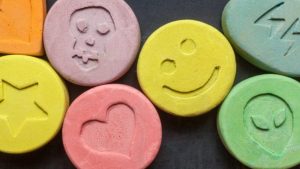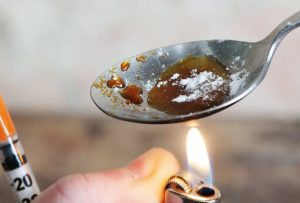The Influence of Social Media on Drug Use
The relationship between social media and drug use is multifaceted, encompassing both promotional and preventive aspects. Social media platforms have become a powerful force that can either contribute to or mitigate drug-related behaviors. This discussion examines how social media can play both roles.
Promotion of Drug Use
Social media can inadvertently promote drug use through the portrayal of certain lifestyle choices that normalize or glamorize substance consumption. Influencers, celebrities, and even peers may share content that depicts drug use as trendy or acceptable. The following factors contribute to this phenomenon:
Algorithmic Exposure:
Social media algorithms are designed to increase engagement by showing users content similar to what they have previously liked or searched for. This can result in users being exposed to more pro-drug content, potentially influencing their perceptions and behaviors.
Peer Influence:
Social networking sites are platforms where peer influence is significant. If a person frequently encounters posts by friends engaging in drug use, it may affect their attitudes towards such behavior.
User-Generated Content:
Content created by users can sometimes glorify drug culture, such as memes, videos, or status updates. This type of content can normalize drug use, especially among impressionable audiences.
Steps to Mitigate Promotion
Social media platforms and users can take steps to reduce the promotion of drug use. Platforms may refine their algorithms to limit the spread of content that promotes substance abuse. Users can help by reporting inappropriate content and challenging narratives that glorify drug use.
Role in Preventing Drug Use
Social media also has the potential to serve as a tool for preventing drug use by disseminating information and offering support.
Educational Campaigns:
Organizations can use social media to conduct educational campaigns about the dangers of drug use. These campaigns can reach a vast audience, delivering preventive messages and raising awareness about substance abuse.
Support Networks:
Platforms can host support groups and forums where individuals share experiences and offer mutual support. These online communities can provide resources and encouragement for those facing challenges with drug use.
Influencer Collaboration:
Collaborating with influencers who advocate for healthy lifestyle choices can be an effective way to counteract pro-drug content. These influencers can use their platforms to spread messages about drug prevention and healthy living.
Examples of Effective Initiatives
Many initiatives have successfully utilized social media for drug prevention. Campaigns led by health organizations, such as the National Institute on Drug Abuse, use social media to share research findings and preventive messages. These campaigns leverage the wide reach of social media to impact public behavior and policy.
Conclusion
Social media plays a dual role in the context of drug use by both promoting and preventing it. While it can propagate harmful content that glamorizes drug use, it also offers unprecedented opportunities for education and support. By harnessing social media responsibly, society can work towards mitigating its negative impacts and amplifying its potential as a preventive tool.
Further Exploration of the Relationship
To understand the complex relationship further, it is essential to consider the various forms and platforms of social media and their distinct influences on behavior. Each platform, be it Facebook, Instagram, Twitter, or emerging networks like TikTok, has its unique algorithm, user demographics, and types of content that can affect views on drug use differently. Exploring how these aspects uniquely contribute to or mitigate drug-related content is pivotal in addressing the issue holistically.
Understanding Different Platforms
Facebook:
With its broad user base, Facebook serves as a common ground for both promotion and prevention. Advocacy groups and prevention campaigns can engage a vast audience, but the platform also hosts pages and groups that might promote drug use culture subtly or directly.
Instagram:
As a visually-driven platform, Instagram’s role in promoting drug use often comes through images and stories. The portrayal of lavish lifestyles involving substance use can glamorize these behaviors, particularly among young audiences who look up to influencers. Conversely, it can be a space for visual storytelling in prevention campaigns, highlighting recovery journeys and creating impactful narratives.
Twitter:
Twitter’s ability to amplify messages through retweets can quickly disseminate both harmful and preventive content. It’s a platform where news, including drug-related information, spreads rapidly. Health organizations can utilize Twitter’s fast-paced nature to correct misinformation and share vital preventive messages effectively.
TikTok:
As a rising platform with significant appeal to younger users, TikTok poses unique challenges and opportunities. Trends and challenges involving substances can go viral quickly, sometimes promoting risky behaviors. However, TikTok also opens avenues for creative prevention messaging using humor, relatable content, and influencer partnerships to engage younger audiences proactively.
Challenges Faced by Social Media Platforms
Despite the potential for prevention, several challenges complicate efforts on social media platforms. One is the difficulty in regulating user-generated content, where individuals can easily share information that may not be accurate or safe. Moreover, distinguishing between harmful and harmless content often presents a gray area that algorithms and human moderators struggle to manage effectively.
Furthermore, the global nature of social media means that platforms must navigate different cultural contexts in enforcing community standards related to drug content. Varying legal statuses and societal norms make it challenging to establish consistent policies that apply universally. These complexities require platforms to employ nuanced strategies that consider regional variations while maintaining an overarching commitment to user safety.
Collaborative Efforts and Policy Implementation
Efforts to leverage social media for drug prevention must be collaborative, involving policymakers, health organizations, educators, and the platforms themselves. By working together, these entities can develop comprehensive strategies that address both the promotion and prevention of drug use online.
One efficient approach involves integrating technology with public health initiatives, using data analytics to monitor trends and identify potential outbreaks of pro-drug content. This information can inform targeted interventions and policy adjustments. Additionally, establishing partnerships with influencers who can leverage their reach to spread positive messages about drug avoidance and recovery is a promising strategy.
Looking Towards the Future
As social media continues to evolve, its influence on public behavior, including drug use, will likely expand. The future presents both challenges and opportunities in using these platforms responsibly to minimize harm and maximize benefits. With continuous innovations in technology, including AI-driven solutions and more informed algorithmic designs, the potential to positively impact drug-related behaviors through social media will grow substantially.
In conclusion, recognizing the dual role of social media, striving for responsibility in content creation, and prioritizing collaborative efforts are steps towards achieving a balanced approach. Only through a collective commitment to understanding and addressing these dynamics can society hope to harness the full potential of social media as a tool for combating drug-related issues.





